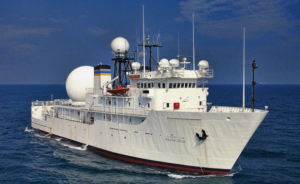
Unpacking the Geopolitical Tensions: Taiwan, China, and U.S. Involvement
At Extreme Investor Network, we recognize that the dynamics in the Taiwan Strait are more than just geopolitical chess moves—these tensions are reshaping the global economic landscape. With that in mind, let’s delve deeper into the complexities of U.S.-China relations in this pivotal region and their implications for investors and international markets.
The U.S.-China Trade War: More Than Just Tariffs
Trade wars have become a familiar backdrop in U.S.-China relations, but the real drama is unfolding in the military domain. The Chinese government is increasingly viewing U.S. arms sales to Taiwan and the Philippines as existential threats. The recent deployment of F-16 fighter jets to these regions has caught the attention of the Chinese Defense Ministry, which has raised alarms regarding national security.
As a response, the U.S. State Department has reaffirmed its commitment to allies in the Indo-Pacific, indicating that bolstering Taiwan and the Philippines is a strategic move rooted in a long-standing military playbook established during the Cold War to counteract Soviet and Chinese influence.
The Strategic Military Landscape of the First Island Chain
The U.S. military’s strategy in the Indo-Pacific centers around the "First Island Chain," a critical line of defense that includes Taiwan, the Ryukyu Islands, and parts of Southeast Asia. This chain serves as a bulwark against Chinese regional ambitions and provides a strategic vantage point for the U.S. Navy to enforce blockades in the event of conflict.
In contrast, the People’s Liberation Army Navy (PLAN) is not sitting idly by. With the largest surface fleet in the world, China is enhancing its naval capabilities, deploying advanced missile systems and expanding its reach in the Pacific. The recent large-scale naval exercises near Taiwan—a demonstration of power involving around 90 vessels and fighter jets—signal China’s readiness to assert its influence.
Arms Deals and Military Alliances
In a series of provocative moves, Taiwan has acquired 66 F-16/D Block 70 fighter jets, and the Philippines has also ordered 16 F-16C Block 70/72 fighters. These arms sales are not merely transactions; they represent a broader commitment to the 1979 Taiwan Relations Act, which mandates the U.S. to provide defensive weapons to Taiwan.
Both the U.S. and its allies are keenly aware of the implications of these military enhancements. The mutual defense treaty between the U.S. and the Philippines heightens the stakes, indicating that an attack on one could lead to a larger conflict, potentially involving the U.S. directly.
Understanding the Risks for Investors
For investors, the tensions in the Taiwan Strait pose significant implications. With both nations increasing defense spending and military presence, the risk of conflict is palpable. The economic ramifications of a military confrontation could be catastrophic—not just for the immediate region but for global supply chains and markets.
Moreover, sectors like defense contracting, energy, and technology stand to be heavily influenced by these geopolitical shifts. Investors should closely monitor developments and position their portfolios accordingly, keeping an eye on defense stocks, emerging markets, and commodities that may fluctuate in reaction to escalating tensions.
Conclusion: A Clarion Call for Vigilant Investors
As we navigate these complexities at Extreme Investor Network, we believe that understanding the intricate geopolitical landscape is essential for informed investment decisions. The U.S.-China dynamic is about more than trade; it is a contest for influence, security, and ultimately, economic supremacy in the Indo-Pacific region. By staying ahead of these developments, investors can better position themselves in an increasingly volatile world.
For further insights and detailed analysis on how these geopolitical shifts could impact your investments, stay connected with us at Extreme Investor Network. We’re dedicated to providing you with the unique information and strategies you need to thrive in today’s complex economic environment.

